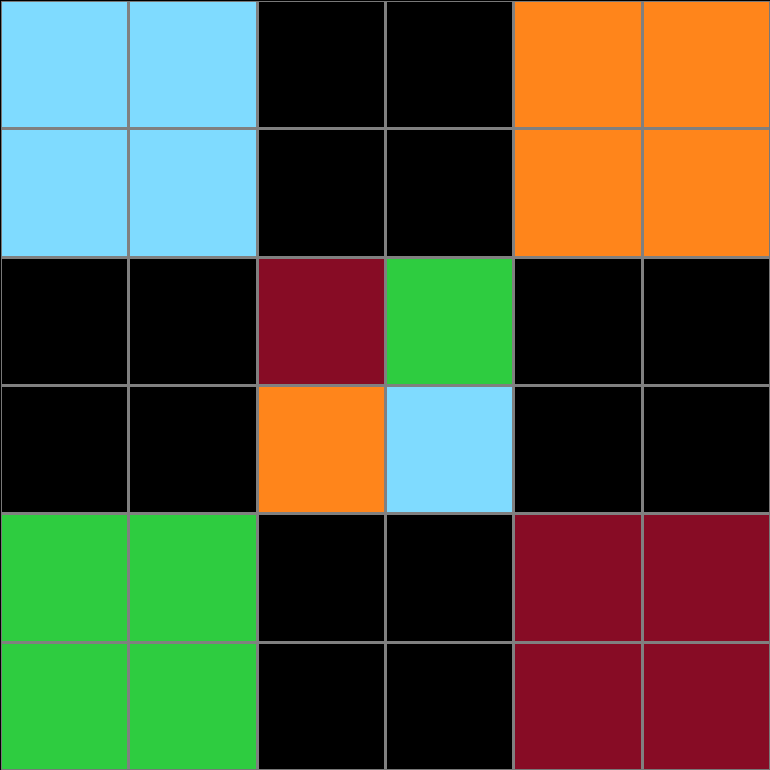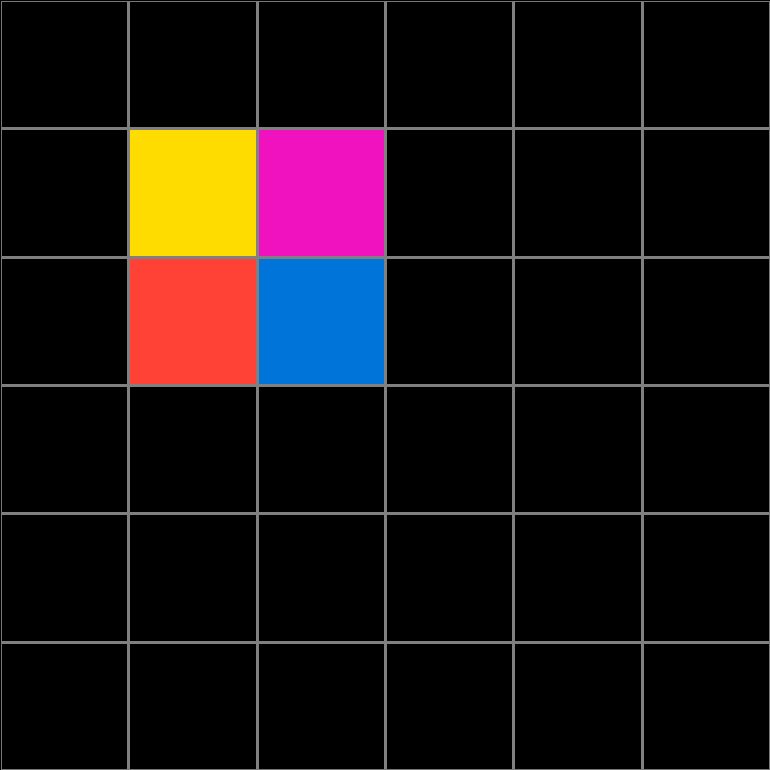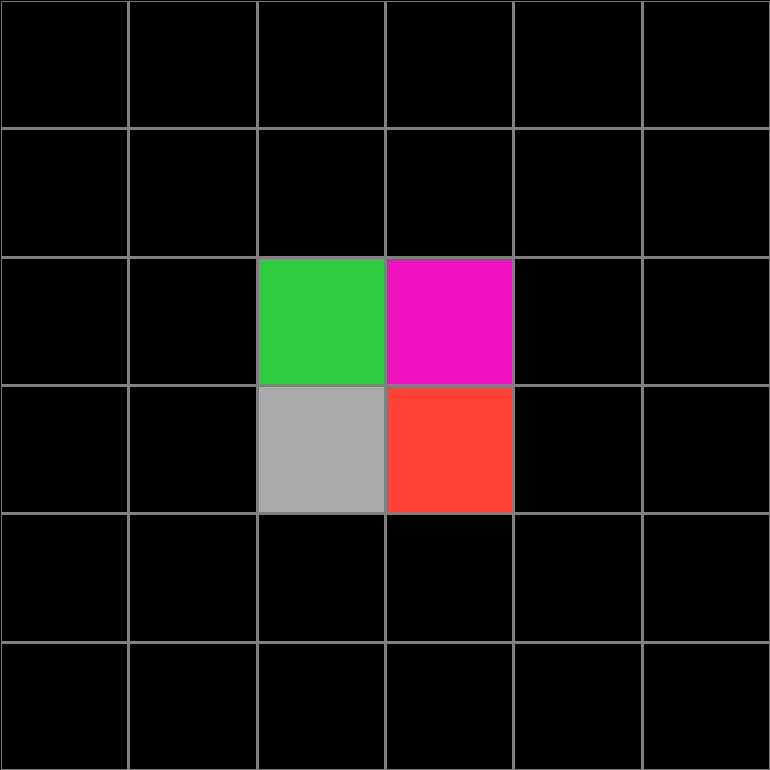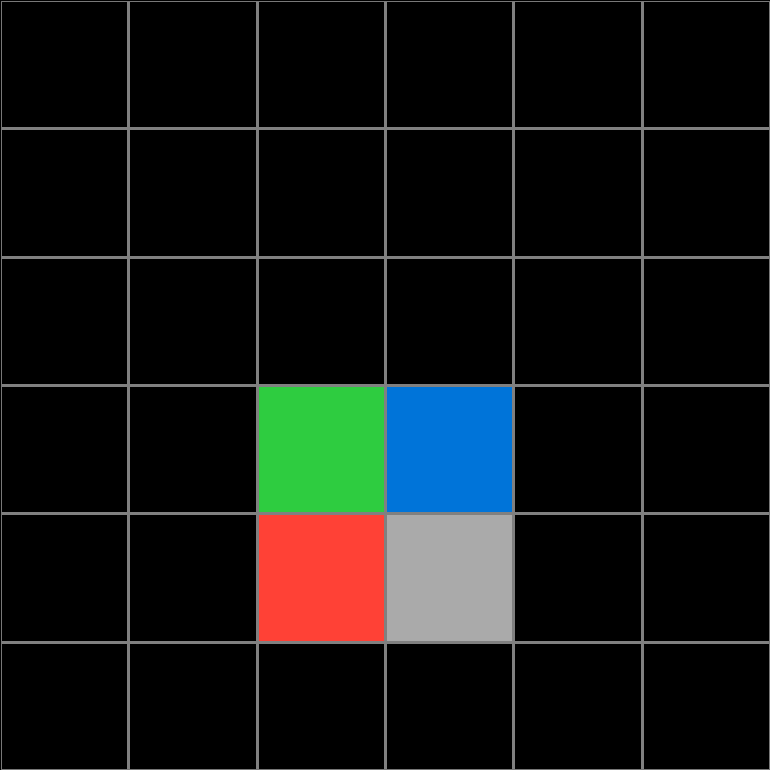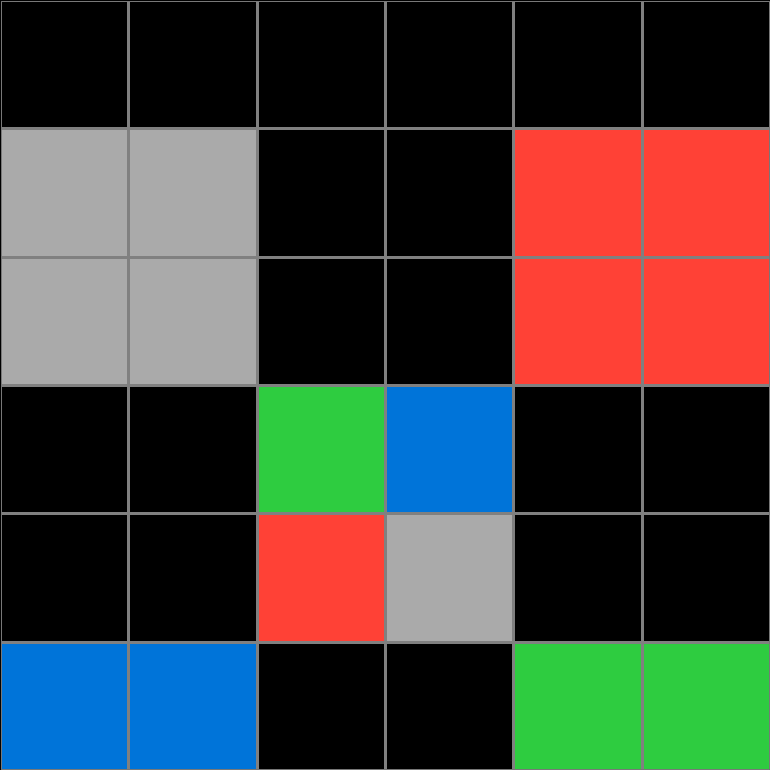Participant 1
Initial description: Made a two cell line or a square of the color diagonal to the color the line or square is next to.
Final description: Made a two cell line or a square of the color diagonal to the color the line or square is next to.

Participant 2
Initial description: The squares are symmetrical, and always the color of the opposite corner of the adjoining square.
Final description: The squares are symmetrical, and always the color of the opposite corner of the adjoining square.
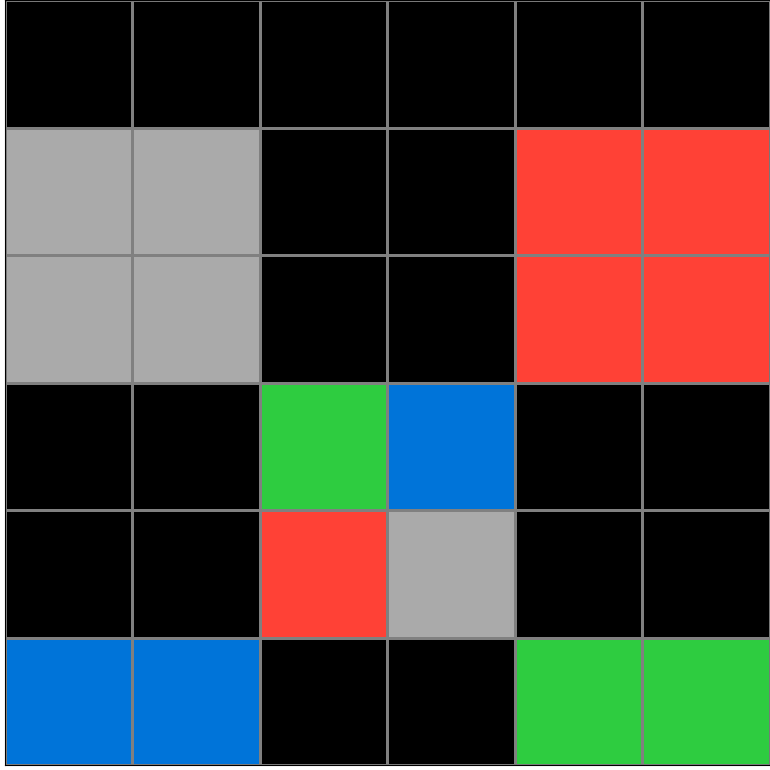
Participant 3
Initial description: The rule is to preserve the 2x2 square tile of colors and reflect about the opposing side a 2x2 square of the same color for each individual tile color in the main 2x2 square tile set. The number of rows and columns are the same in the output as in the input and the color reflections are ignored if those 2x2 squares go outside this output box defined by the input box.
Final description: The rule is to preserve the 2x2 square tile of colors and reflect about the opposing side a 2x2 square of the same color for each individual tile color in the main 2x2 square tile set. The number of rows and columns are the same in the output as in the input and the color reflections are ignored if those 2x2 squares go outside this output box defined by the input box.
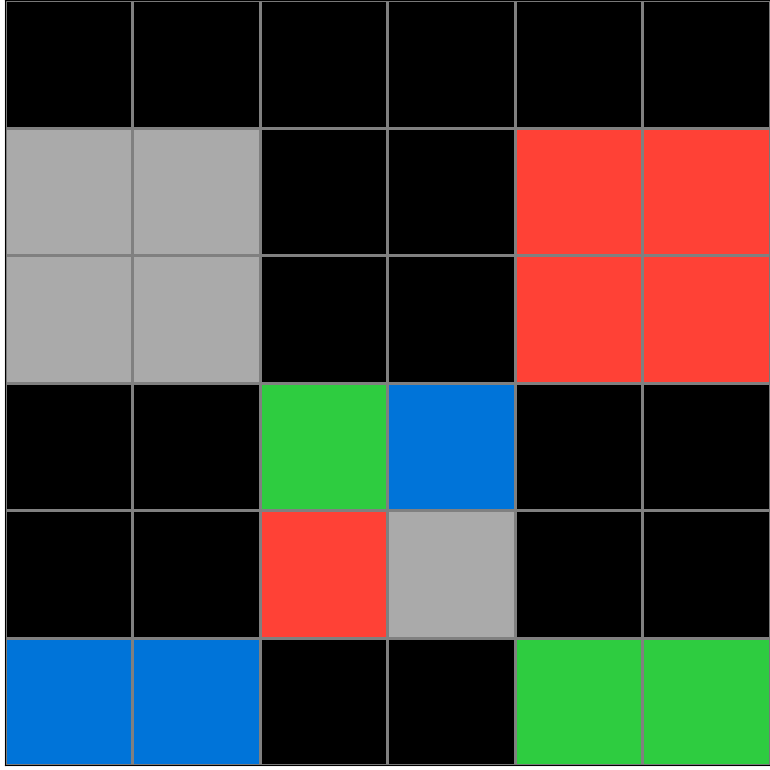
Participant 4
Initial description: NICE
Final description: DONE


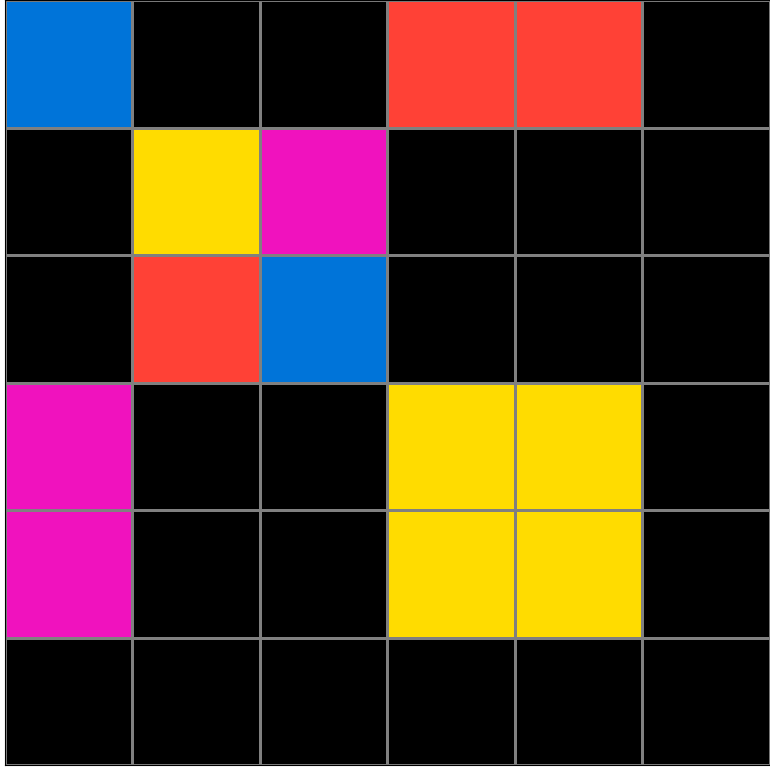
Participant 5
Initial description: same color input or output.
Final description: nothing
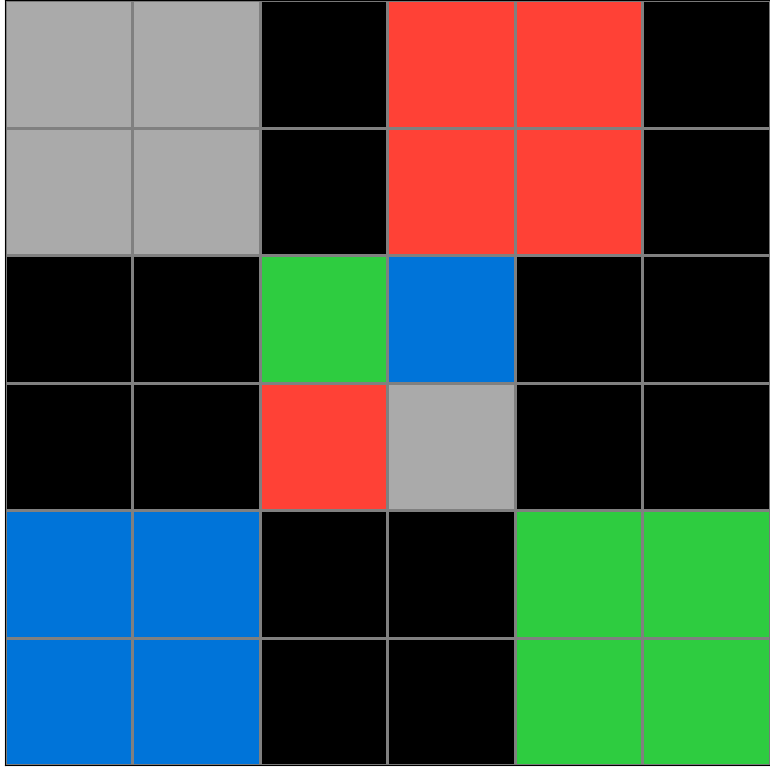
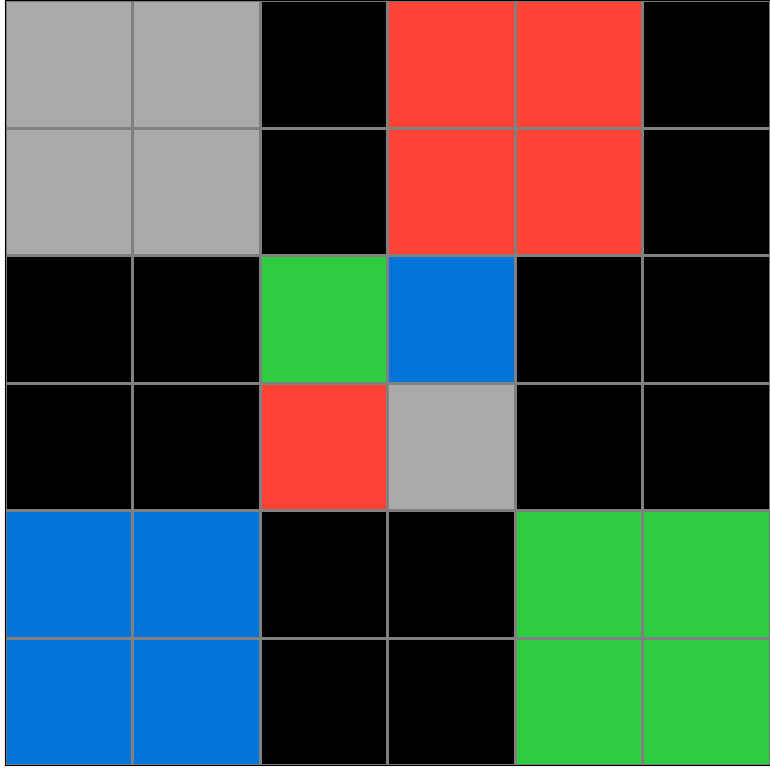
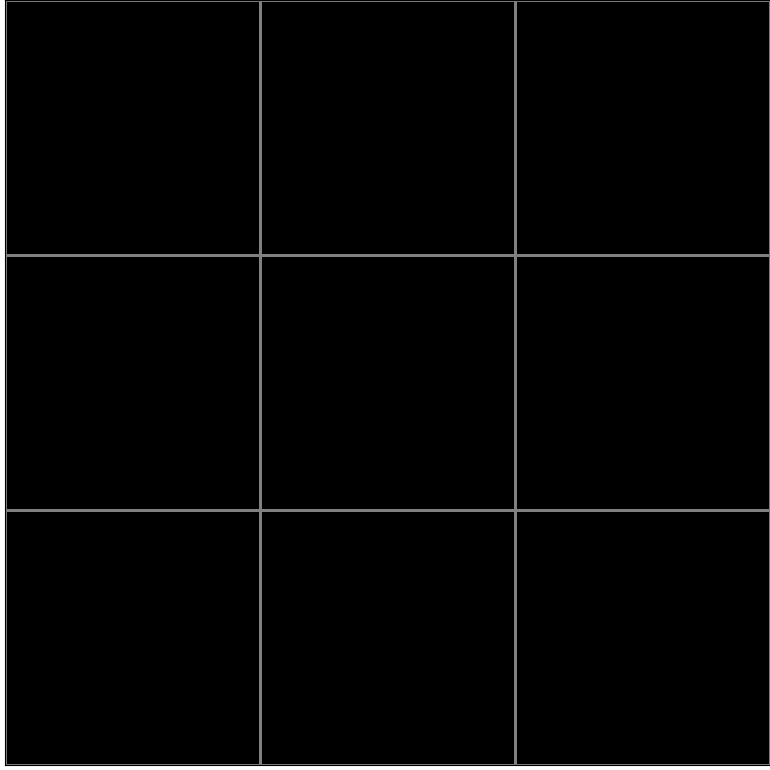
Participant 6
Initial description: from corners of square, make a new 4x4 square of the color on the opposite diagonal corner. if no room on the board only put what will fit.
Final description: from corners of square, make a new 4x4 square of the color on the opposite diagonal corner. if no room on the board only put what will fit.
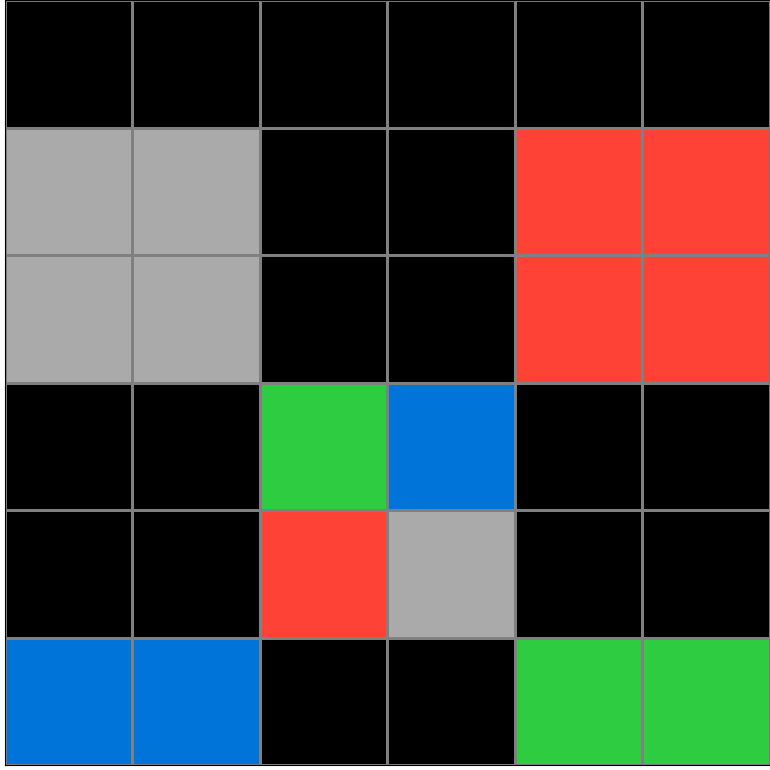
Participant 7
Initial description: tried to match the opocite colors
Final description: I tried to copy the examples and match the opsite colors

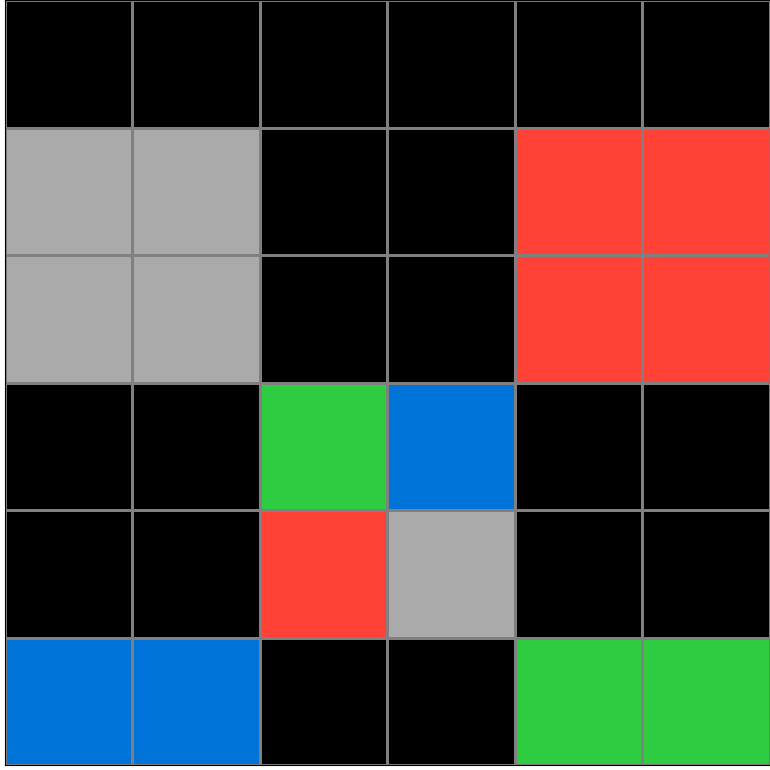
Participant 8
Initial description: I assumed I had to copy the input and then fill in 2x2 grids of the color opposite adjacent of the input grid, if that makes sense.
Final description: I assumed I had to copy the input and then fill in 2x2 grids of the color opposite adjacent of the input grid, if that makes sense.
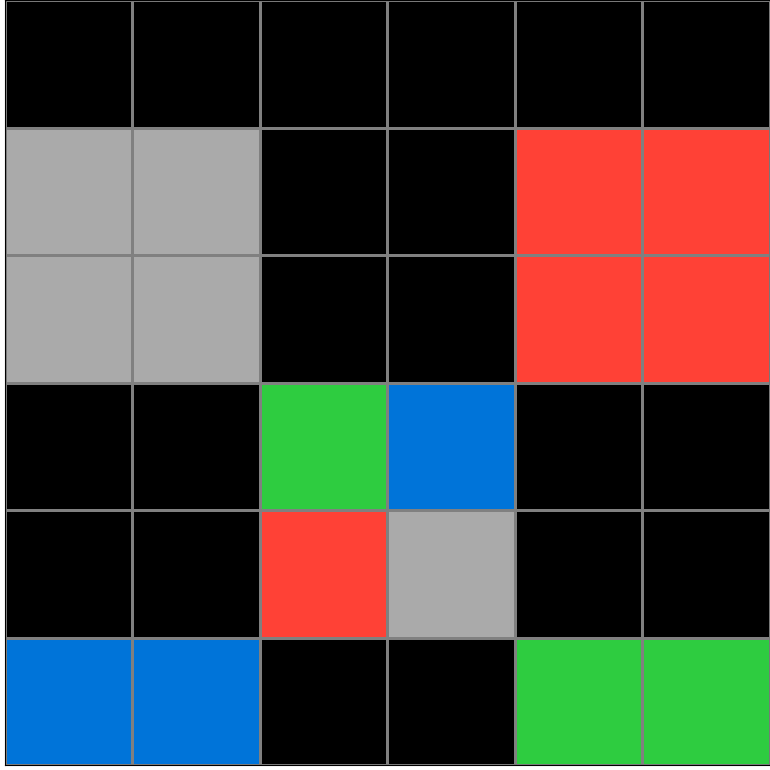
Participant 9
Initial description: Opposite color extends from initial cube to form a 2x2 square.
Final description: Opposite color extends from initial cube to form a 2x2 square.
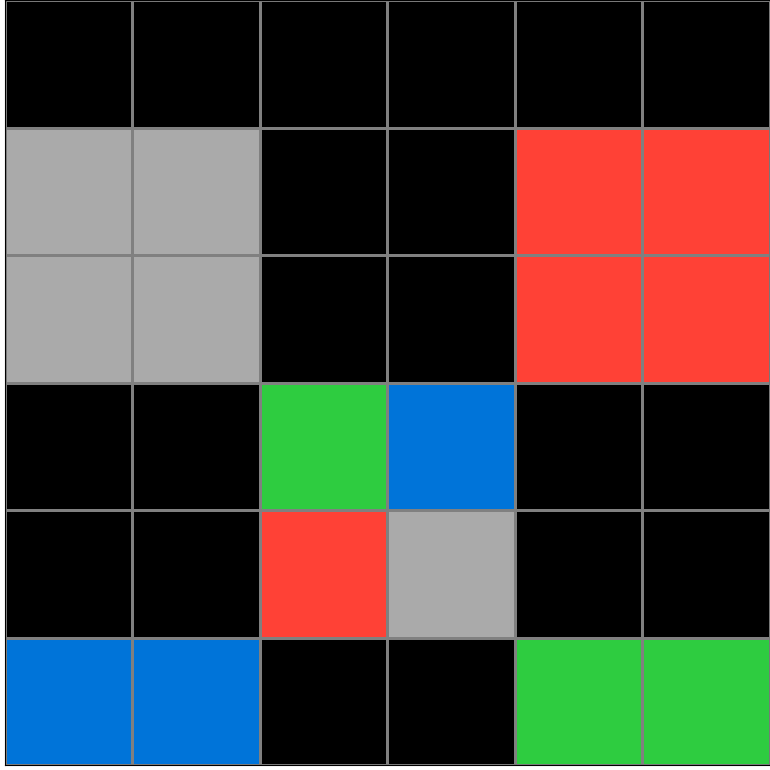
Participant 10
Initial description: Copy your input. Fill out a full four square color block (if you have room) from the opposite corner. So if there is green in the upper left hand corner, you're going to color four squares to make one big square in the lower right hand corner of the color.
Final description: Copy your input. Fill out a full four square color block (if you have room) from the opposite corner. So if there is green in the upper left hand corner, you're going to color four squares to make one big square in the lower right hand corner of the color.

Participant 11
Initial description: Attempt to create a 2x2 square of a color touching the opposite corner of the original square. If the edge is encountered, draw what would be visible of the square.
Final description: Attempt to create a 2x2 square of a color touching the opposite corner of the original square. If the edge is encountered, draw what would be visible of the square.
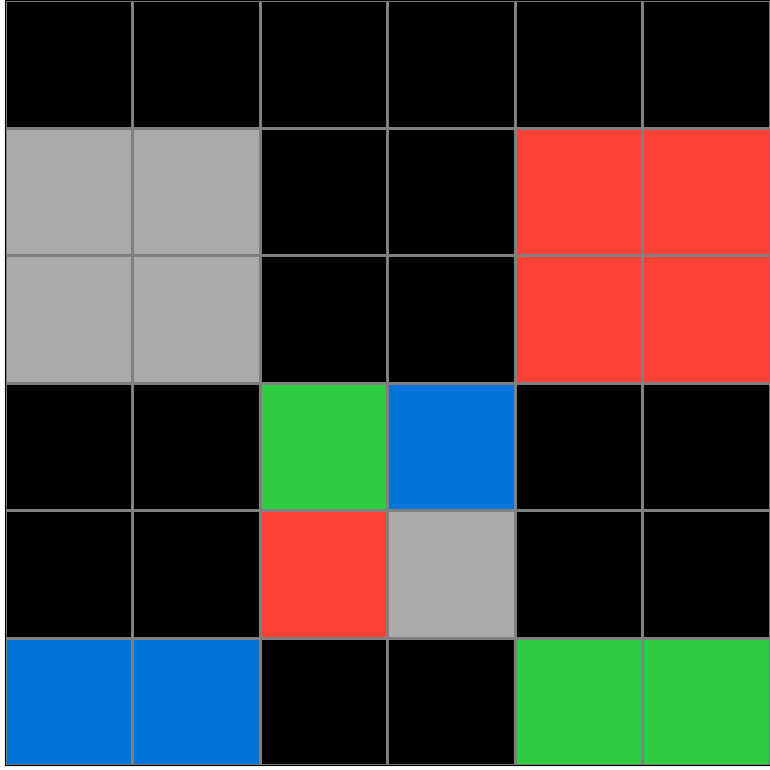
Participant 12
Initial description: The input grid is replicated in the output. The input is always a 2x2 box of cells of various colors. In addition to that original box, four additional boxes (possibly cut off to 1/2 cells depending on the location of the original box) spring out of the corners of the initial box. By out of the corners, I mean from the top-left cell of the original box, diagonally top-left of that is the bottom-right cell of the box that grows out of it, and so on for the other corners, making a kind of checkerboard look with black boxes in between. The colors of these additional boxes are diagonal mirrors of the original. Eg if the original 2x2 is red, green first row, blue, yellow second row, then the top-left box will be yellow, the top-right blue, the bottom-left green, bottom-right red.
Final description: The input grid is replicated in the output. The input is always a 2x2 box of cells of various colors. In addition to that original box, four additional boxes (possibly cut off to 1/2 cells depending on the location of the original box) spring out of the corners of the initial box. By out of the corners, I mean from the top-left cell of the original box, diagonally top-left of that is the bottom-right cell of the box that grows out of it, and so on for the other corners, making a kind of checkerboard look with black boxes in between. The colors of these additional boxes are diagonal mirrors of the original. Eg if the original 2x2 is red, green first row, blue, yellow second row, then the top-left box will be yellow, the top-right blue, the bottom-left green, bottom-right red.


